How to clean a sink without calling a plumber?
Content:
Everyone is familiar with the situation when water from the kitchen sink suddenly refuses to drain and an unpleasant sewer smell spreads throughout the apartment. The matter is clear - there is a blockage in the siphon or pipe, which will require a fair amount of tinkering. Our house is about sixty years old. The old, outdated water supply system presents new surprises every day. Therefore, I know exactly how to remove a blockage in the sink, and for this I use boiling water, a plunger, a mixture of soda and vinegar, I clean the siphon and pipes myself using a plumbing cable, and only in extreme cases do I turn to the help of plumbers.
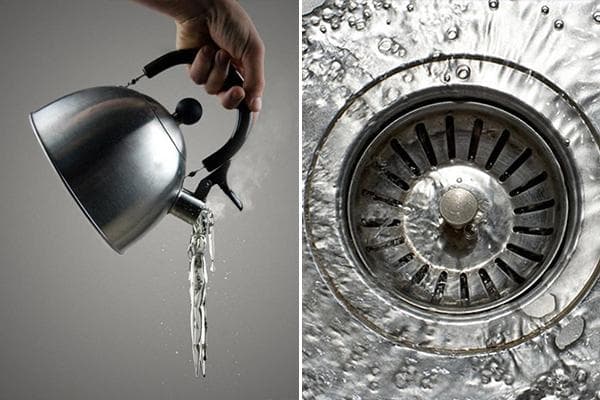
How to clean a pipe with boiling water?
Any plumbing fixture can become clogged, however, this happens most often with the kitchen sink. The fact is that grease, food debris, and pieces of dirt remaining in the sink after washing dishes and food periodically get into the drain. The pipes and the inner surface of the siphon become overgrown with layers of congealed fat, and the outlet of the drain hole narrows to a minimum size. And if the water is still slowly draining, but a specific “aroma” has already floated around the apartment, emergency measures must be taken to eliminate the blockage.
First of all, I try to break the cork with boiling water.To do this, I heat the kettle to a boil, pour the liquid into the drain hole and wait for the result. If the blockage has formed close to the siphon and consists mainly of congealed fat, then success is guaranteed. To be sure, I pour boiling water two or three times.
It must be said right away that this method is only suitable for metal pipes. If the system consists of plastic components, you just need to run hot water (no more than +60°C) under low pressure and wash out the blockage. Sometimes this helps to quickly solve the problem.
Cleaning with a plunger
If the boiling water trick fails, I take out a plunger and try to push the plug using this “miracle of engineering.” I think every home has this plumbing tool that even a weak old woman can use. It consists of a wooden or plastic handle with a rubber dome attached at the bottom.
The water supply system of a house or apartment is a single circuit in which the law of communicating vessels applies. Therefore, before cleaning, I plug all drain points, namely, in the bathroom (sink, bathtub) and close the toilet lid in the toilet. Then I proceed as follows:
- I fill the sink with hot water to 1/3 of the volume, and cover the drain hole with the dome of a plunger.
- I also cover the overflow hole located in the upper part of the kitchen sink with a rag and press it with my hand.
- Pressing forcefully on the plunger, I try to pump water into the pipe and squeeze out the plug.
- I repeat several times until the water drains freely.
This is a very effective cleaning method and in most cases a plunger will most likely solve the problem.If you need to clear a clog in a sink that has two compartments, you need to have two plungers and use them simultaneously.
Remove the cork with baking soda and vinegar
If after all the above steps the cork remains in place, I call on my most faithful assistants - soda and vinegar - to help.
- I pour half a glass (100 g) of tea soda into the sink drain hole. Usually, there is water left in the drain, and the powder does not want to pour through the small holes in the grate, then I push it through with a toothpick.
- I take the same amount of table vinegar (9%), pour it into a ladle, heat it a little over low heat and pour it down the drain.
- I cover the drain hole with a rag, sponge or plunger.
Almost instantly, when baking soda and vinegar are combined, a chemical reaction begins with active hissing and the formation of foam. After waiting about fifteen minutes for the product to take effect, I run hot water over the sink. Under the influence of soda and vinegar, the fat deposited on the walls of the pipe dissolves and the plug disappears. For a better effect, I clean the sink again with a plunger.
Lemon acid
Another effective remedy for cleaning a sink and removing blockages in a pipe is citric acid. I also often use this product to prevent contamination and disinfect the internal surfaces of pipes and eliminate unpleasant odors.
Pour approximately 1 liter of water into a saucepan, bring to a boil and pour in two bags of citric acid (40 g). I pour the mixture into the drain hole, close it with a stopper or a damp cloth and leave it for a couple of hours, after which I pour it with hot water. It is good to carry out this cleaning in the evening and leave the solution in the sink overnight.
Coca-Cola against blockage
An exotic method of cleaning sewer pipes, which sometimes brings very good results. I pour a large bottle of Cola into the drain hole and after a few hours I rinse the sink with hot water.
The carbonated drinks Cola, Sprite, Fanta contain phosphoric acid, and in such large quantities that they can be safely used to remove fat plugs and other contaminants.
Cleaning the siphon
A siphon is installed under the sink - a special device that prevents sewer gases and fumes from escaping. The siphon bowl collects small debris, bones, hair and other particles that for some reason did not enter the drain pipe.
If, after cleaning with a plunger, boiling water or other chemicals, the liquid continues to stand in the sink, it means there is a plug in the siphon or under it. In this case, it is necessary to disassemble and wash the siphon.
To perform this work, no special knowledge or talent is required; any housewife can cope with cleaning the siphon on her own. I do this:
- I prepare an empty bucket and a rag in advance. They will be needed to collect water that spills out after disconnecting the siphon.
- Having unscrewed the upper and lower fastenings, I remove the entire siphon.
- I wash the device with water and detergent using a long brush. I remove debris and dirt from the bowl.
- I clean the section of pipe above the siphon with an iron cable. Perhaps the traffic jam is there.
- I check the permeability of the pipe under the sink, for which I pour a little water into it. If the liquid flows freely into the sewer system, then the problem is solved - the problem was in the siphon. Otherwise, you will have to clean the pipe completely using a special cable.
- I install the siphon in place, tighten the fasteners and check how well the water drains from the sink.
Usually, after such a global cleaning, the drain begins to work normally, the water no longer lingers in the sink and, forming a small whirlpool in the area of the drain hole, rushes down with force.
Working with plumbing cable
A steel cable with a handle is a wonderful device with which you will certainly be able to get rid of plugs and other contaminants in the sewer. Often, after trying all the remedies, I take the plumbing cable out of the closet.
I somehow bought this device at a hardware store just in case. It is inexpensive and takes up little space when folded. And I never regretted my purchase, since many times the cable helped me out in the most hopeless situations. It is better to take a cable for household needs that is not too long, about 1.5-2 m. You also need to pay attention to the diameter, it should pass freely into the pipe.
In fact, there is nothing easier than cleaning a sewer using such a device, but in order to quickly achieve the desired result and not damage either the pipes or the tool, it is better to learn in advance how to do it correctly. I do it like this:
- I unwind the plumbing cable and carefully insert it into the drain hole. I push the cable until it hits an obstacle. The contents of the pipe are not visible from the outside, so you should remember that not every obstruction is a blockage. This could be, for example, a joint at the junction of pipes. To make sure that the cable has reached the plug, I pull it back slightly and try to push it forward again. If it doesn’t go away, then it really is a blockage.
- I begin to make reciprocating movements so that the end of the cable destroys the particles accumulated in the pipe. I have a cable with a handle for longitudinal rotation. You can’t put such a cable into a pipe “with ends”, since it is convenient to hold; in addition, you can immediately push the cable along the pipe and turn the handle. It is very good if during cleaning you can supply hot water into the pipe, which will help soften the blockage and make it easier for the cable to move inside the pipe. It is also necessary to ensure that the cable is tightly stretched. If the tension is loosened, it may become twisted, causing damage and making it unusable.
- As soon as I feel that the cable passes freely through the problem area, I remove it from the pipe and run hot water into the drain.
Of course, drain cleaning is not a pleasant job, but if you don’t want to call and wait for a plumber, who is usually in no hurry, you have to deal with the problem yourself. By the way, if you couldn’t clear the blockage even with the help of a cable, it means that the blockage is somewhere outside the apartment and you can’t do it without a specialist.
How to prevent blockage?
A clogged sink is an inevitable problem for any apartment, but I try to prevent its occurrence, so I carry out preventative measures. To do this, once a week I pour a pot of boiling water into the sink, leave it for 15-20 minutes and then clean it with a plunger.
In addition, I try not to pour leftover broth and other liquids containing fats into the kitchen sink, but rather throw them into the toilet. Before washing dishes, I thoroughly clean plates and pots of food debris. I know that if I am too lazy to do this, then in the near future I will have to remove the plug in the pipe.
You can remove a blockage in the sink using boiling water, soda, vinegar and other available means or special plumbing devices: a plunger and a steel cable.
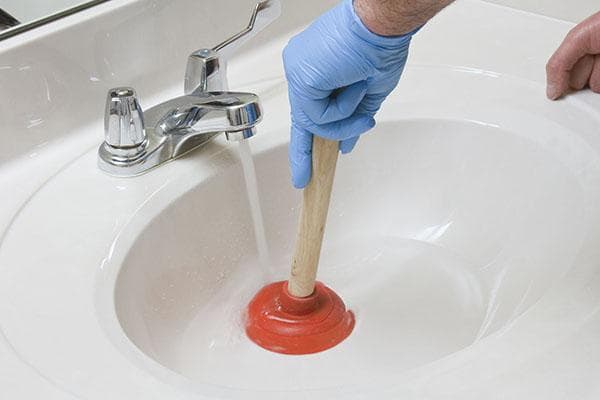
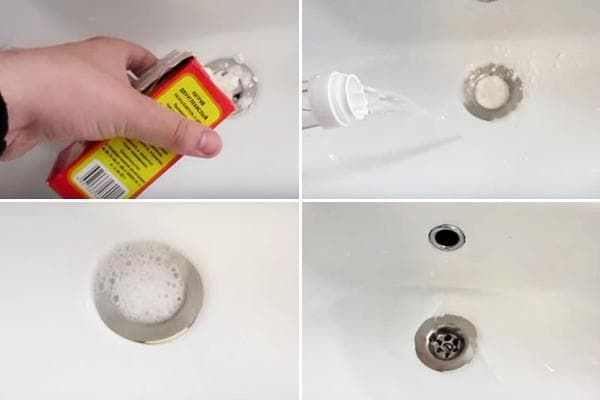
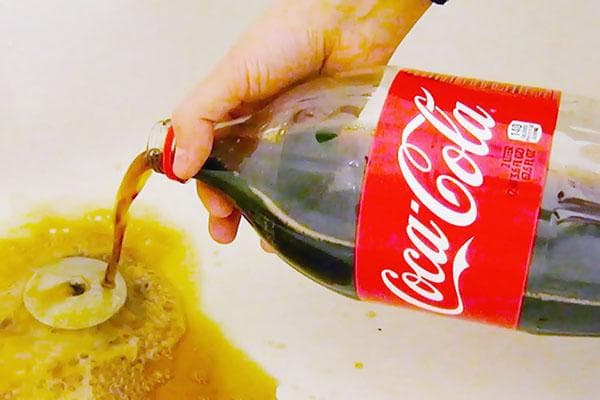
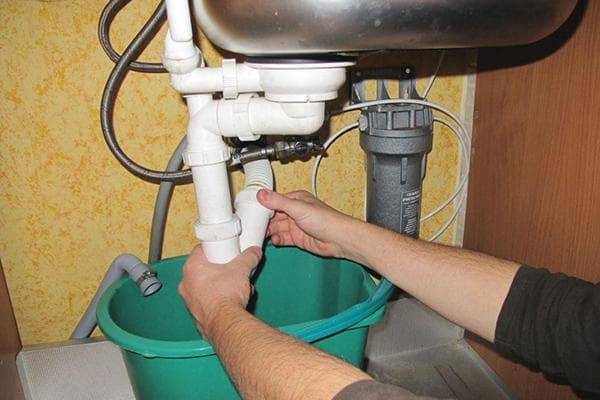
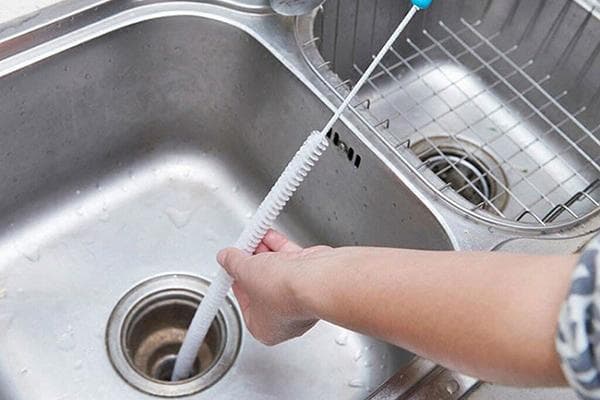
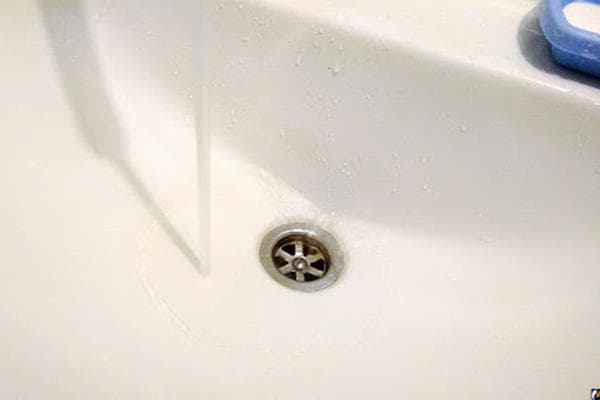
Vinegar + baking soda cleans well